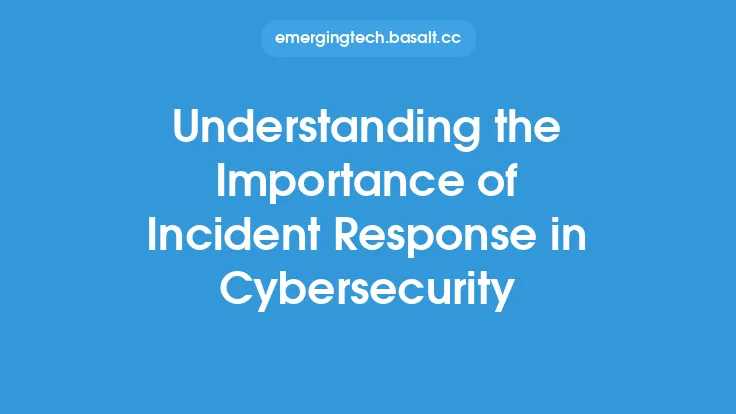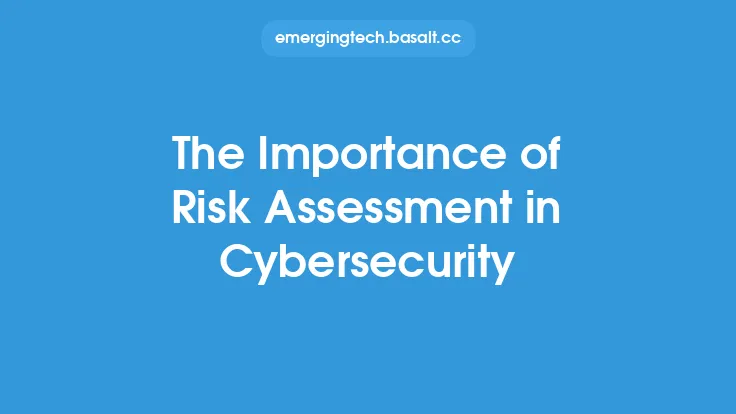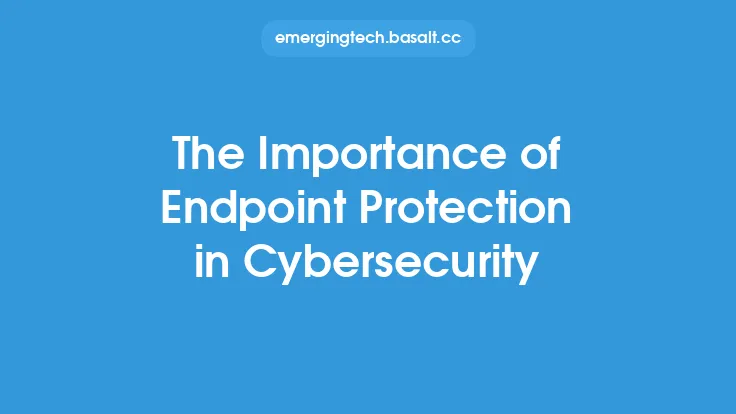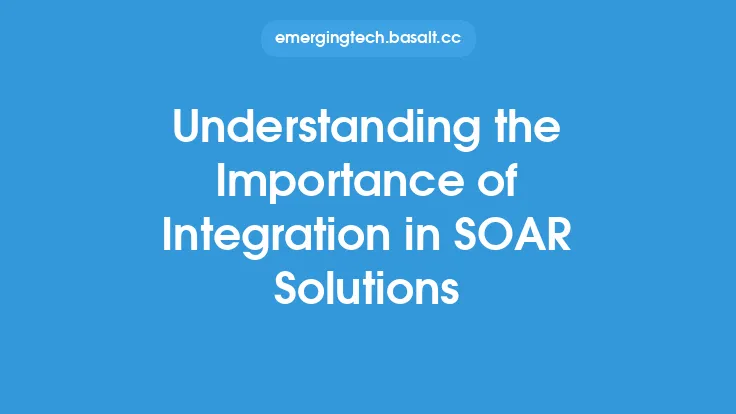In today's digital landscape, cybersecurity is a top priority for organizations of all sizes. As technology advances and the threat landscape evolves, it's essential to have a robust cybersecurity strategy in place to protect against potential threats. One critical component of this strategy is vulnerability management, which involves identifying, classifying, prioritizing, and remediating vulnerabilities in an organization's systems, networks, and applications. Vulnerability management is a proactive approach to cybersecurity that helps prevent attacks, reduce risk, and ensure the confidentiality, integrity, and availability of sensitive data.
What is Vulnerability Management?
Vulnerability management is a systematic process that involves identifying and mitigating vulnerabilities in an organization's IT infrastructure. It's a critical component of cybersecurity that helps prevent attacks, reduce risk, and ensure compliance with regulatory requirements. The goal of vulnerability management is to identify potential vulnerabilities before they can be exploited by attackers, and to prioritize and remediate them based on their severity and potential impact. This process involves a combination of people, processes, and technology, and requires ongoing monitoring and maintenance to ensure the security and integrity of an organization's systems and data.
The Importance of Vulnerability Management
Vulnerability management is essential for several reasons. Firstly, it helps prevent attacks by identifying and mitigating potential vulnerabilities before they can be exploited by attackers. This reduces the risk of a security breach, which can have significant financial, reputational, and regulatory consequences. Secondly, vulnerability management helps ensure compliance with regulatory requirements, such as PCI-DSS, HIPAA, and GDPR, which mandate the implementation of robust cybersecurity controls. Finally, vulnerability management helps organizations improve their overall cybersecurity posture, by identifying and addressing potential vulnerabilities, and ensuring the confidentiality, integrity, and availability of sensitive data.
Key Components of Vulnerability Management
Effective vulnerability management involves several key components, including vulnerability identification, classification, prioritization, and remediation. Vulnerability identification involves using various tools and techniques, such as vulnerability scanning and penetration testing, to identify potential vulnerabilities in an organization's systems, networks, and applications. Classification involves categorizing vulnerabilities based on their severity, potential impact, and other factors, to determine their priority for remediation. Prioritization involves prioritizing vulnerabilities based on their severity, potential impact, and other factors, to ensure that the most critical vulnerabilities are addressed first. Remediation involves taking steps to mitigate or remediate identified vulnerabilities, such as applying patches, updating software, or implementing additional security controls.
Vulnerability Management Tools and Techniques
There are several tools and techniques available to support vulnerability management, including vulnerability scanners, penetration testing tools, and configuration management systems. Vulnerability scanners are automated tools that scan an organization's systems, networks, and applications for potential vulnerabilities, and provide a report on identified vulnerabilities. Penetration testing tools are used to simulate attacks on an organization's systems, networks, and applications, to identify potential vulnerabilities and test the effectiveness of security controls. Configuration management systems are used to track and manage changes to an organization's IT infrastructure, to ensure that all systems, networks, and applications are properly configured and up-to-date.
Best Practices for Vulnerability Management
To implement effective vulnerability management, organizations should follow several best practices. Firstly, they should implement a comprehensive vulnerability management program that includes regular vulnerability scanning, penetration testing, and configuration management. Secondly, they should prioritize vulnerabilities based on their severity, potential impact, and other factors, to ensure that the most critical vulnerabilities are addressed first. Thirdly, they should implement a robust patch management process, to ensure that all systems, networks, and applications are properly patched and up-to-date. Finally, they should continuously monitor and maintain their vulnerability management program, to ensure that it remains effective and aligned with changing business needs and regulatory requirements.
Common Vulnerability Management Challenges
Despite its importance, vulnerability management can be challenging to implement and maintain. Common challenges include limited resources, lack of expertise, and inadequate tools and technology. Additionally, vulnerability management can be time-consuming and labor-intensive, requiring significant manual effort to identify, classify, prioritize, and remediate vulnerabilities. To overcome these challenges, organizations should invest in automated tools and technology, such as vulnerability scanners and configuration management systems, to streamline and simplify the vulnerability management process. They should also provide ongoing training and support to their IT staff, to ensure that they have the necessary skills and expertise to implement and maintain effective vulnerability management.
Conclusion
In conclusion, vulnerability management is a critical component of cybersecurity that helps prevent attacks, reduce risk, and ensure the confidentiality, integrity, and availability of sensitive data. It involves identifying, classifying, prioritizing, and remediating vulnerabilities in an organization's systems, networks, and applications, and requires ongoing monitoring and maintenance to ensure the security and integrity of an organization's IT infrastructure. By implementing effective vulnerability management, organizations can improve their overall cybersecurity posture, reduce the risk of a security breach, and ensure compliance with regulatory requirements.





